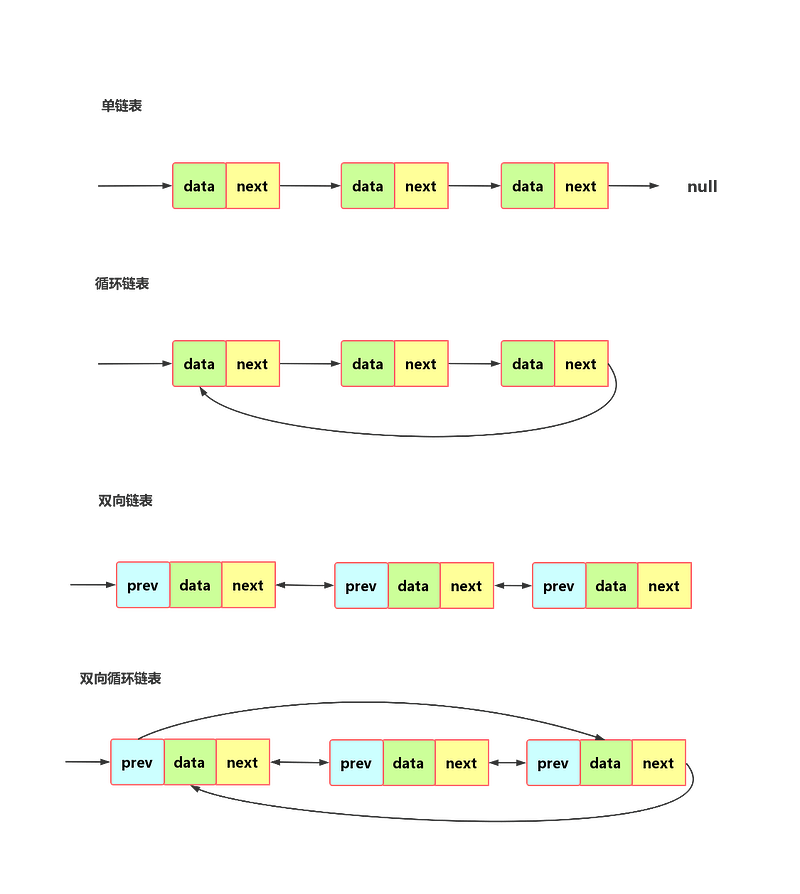链表与数组的区别
- 复杂度分析
| 时间复杂度 | 数组 | 链表 |
|---|---|---|
| 插入删除 | O(n) | O(1) |
| 随机访问 | O(1) | O(n) |
-
其他角度分析
- 内存连续,利用CPU的机制,可以预读链表中的数据,故访问效率高
- 而数组在内存中并不是连续存储的,所以CPU缓存不友好,没办法预读
- 数组的大小不固定,及时动态申请,也需要拷贝数据,费时费力
- 链表支持动态扩容
- 链表的缺点是:存储空间大
单链表和循环链表
- 区别在于头结点与尾结点是否相连
- 循环链表从尾部可以直接到达头,适合环形数据结构,比如约瑟夫问题
双向链表优点
-
找到上一个结点的时间复杂度为O(1)
-
插入、删除操作更高效
- 删除结点中“值等于给定值”的结点
- 删除指定指针指向的结点
代码实现单链表
# 链节点类
class ListNode:
def __init__(self, val):
self.val = val
self.next = None
# 链表类
class LinkedList:
def __init__(self):
self.head = None
# 根据 data 初始化一个新链表
def create(self, data):
self.head = ListNode(0)
cur = self.head
for i in range(len(data)):
node = ListNode(data[i])
cur.next = node
cur = cur.next
# 获取链表长度
def length(self):
count = 0
cur = self.head
while cur:
count += 1
cur = cur.next
return count
# 查找元素
def find(self, val):
cur = self.head
while cur:
if val == cur.val:
return cur
cur = cur.next
return None
# 头部插入元素
def insert_to_head(self, val):
node = ListNode(val)
node.next = self.head
self.head = node
# 尾部插入元素
def insert_to_tail(self, val):
node = ListNode(val)
cur = self.head
while cur.next:
cur = cur.next
cur.next = node
# 中间插入元素
def insert_to_middle(self, index, val):
count = 0
cur = self.head
while cur and count < index - 1:
count += 1
cur = cur.next
if not cur:
return 'Error'
node = ListNode(val)
node.next = cur.next
cur.next = node
# 改变元素
def change(self, index, val):
count = 0
cur = self.head
while cur and count < index:
count += 1
cur = cur.next
if not cur:
return 'Error'
cur.val = val
# 链表头部删除元素
def remove_head_element(self):
if self.head:
self.head = self.head.next
# 链表尾部删除元素
def remove_tail_element(self):
if not self.head.next:
return 'Error'
cur = self.head
while cur.next.next:
cur = cur.next
cur.next = None
# 链表中间删除元素
def remove_middle_element(self, index):
count = 0
cur = self.head
while cur.next and count < index - 1:
count += 1
cur = cur.next
if not cur:
return 'Error'
del_node = cur.next
cur.next = del_node.next

